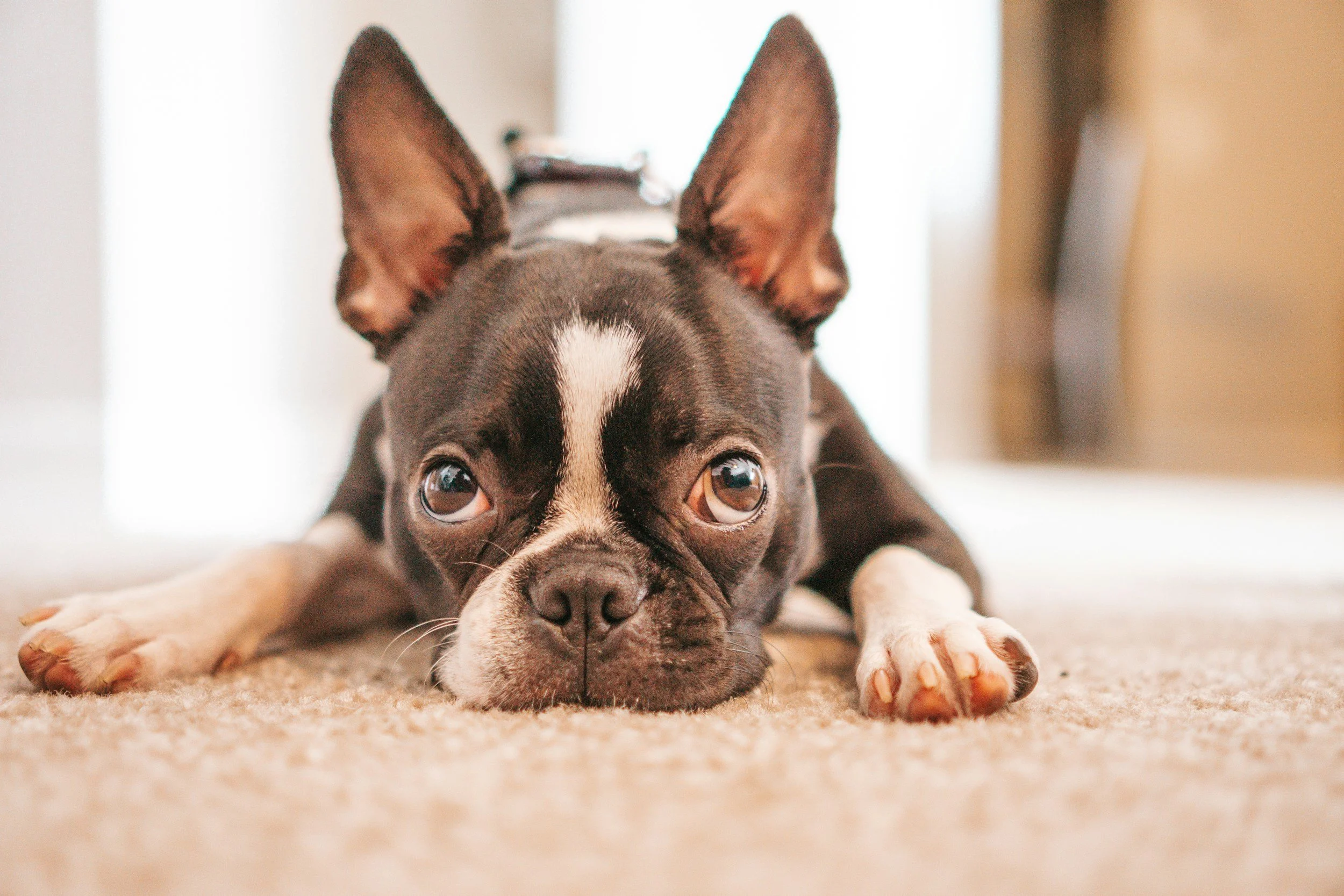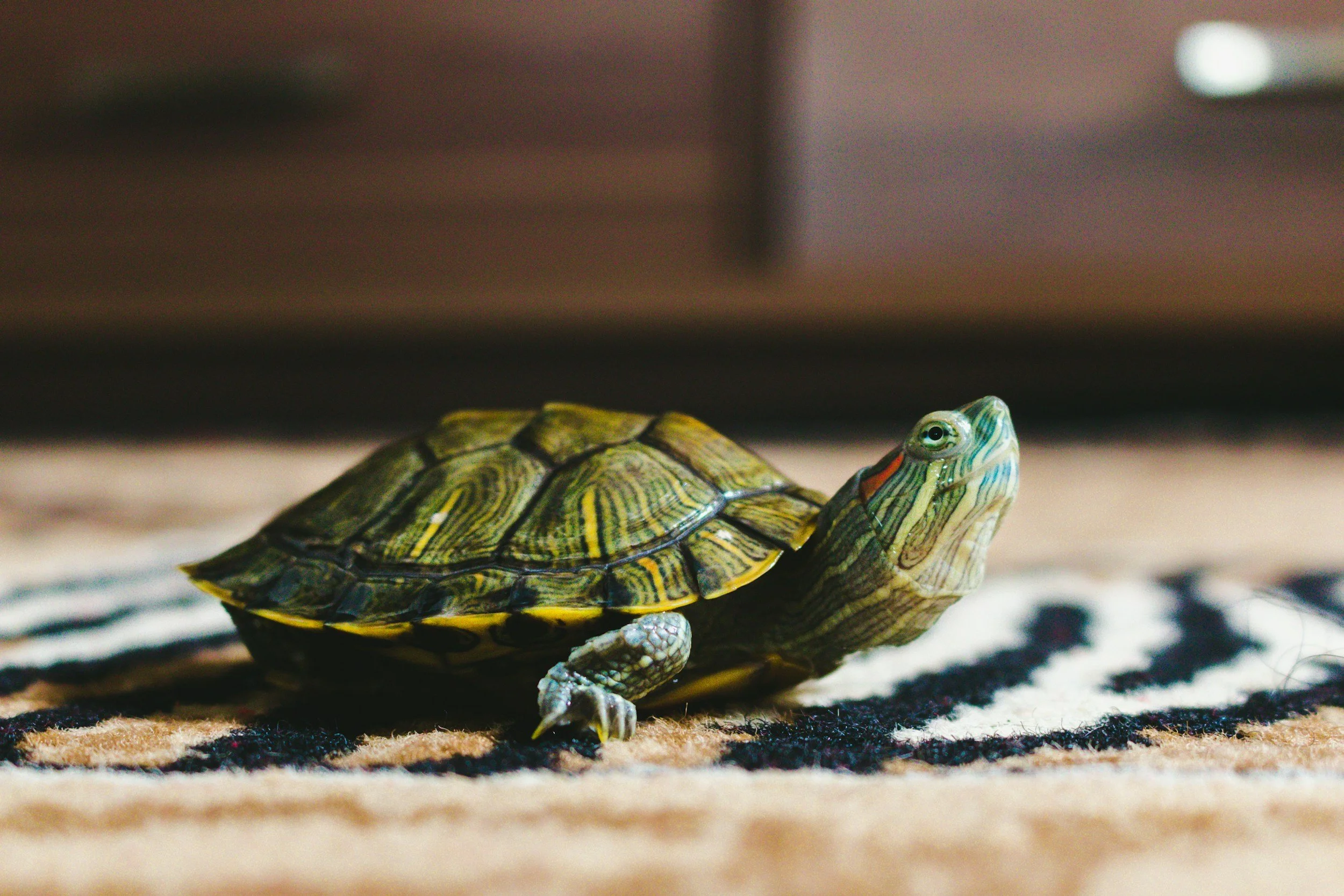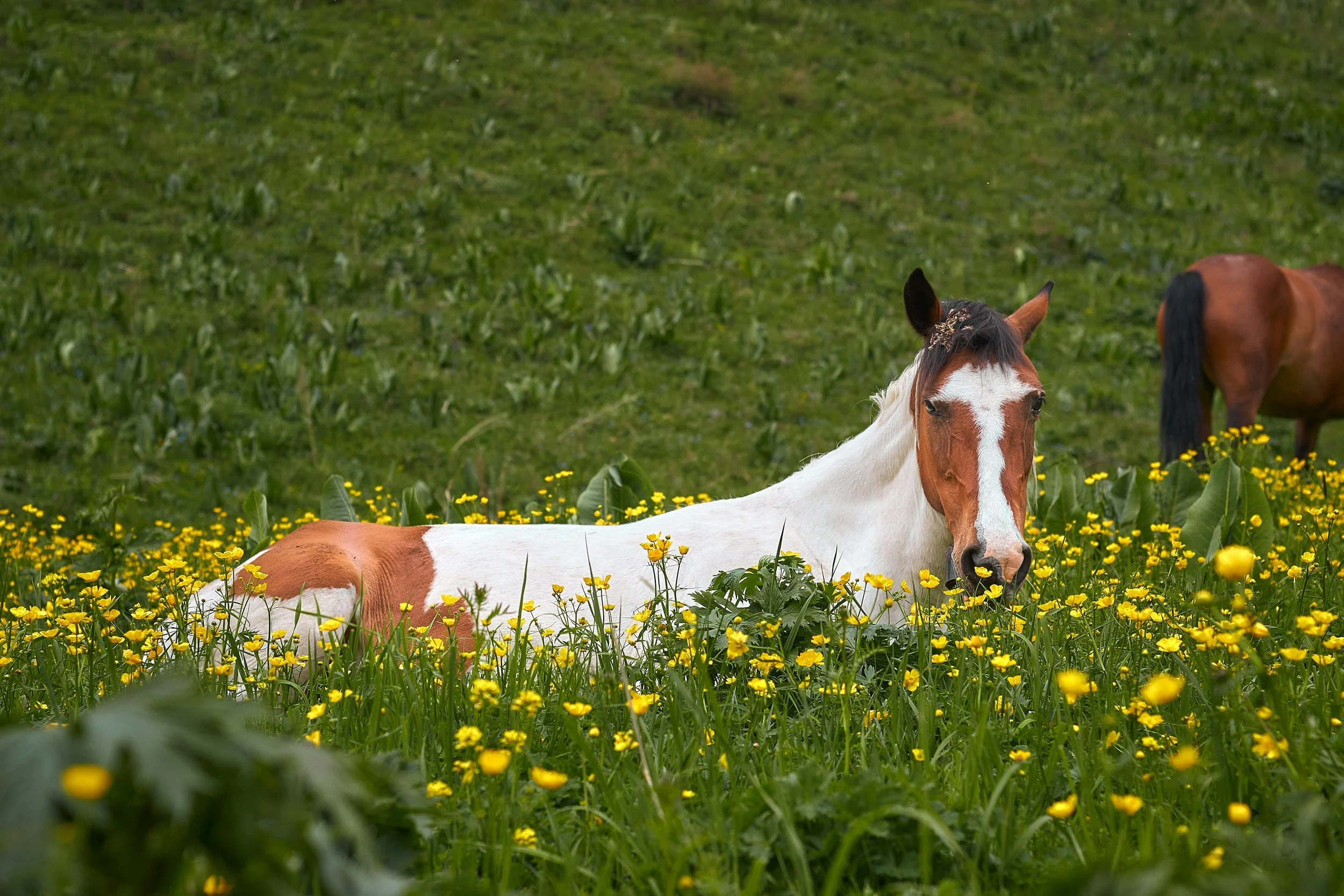Grieving a Pet: How to Honor Big Love and Deep Loss in a World That Doesn’t Get It
Grief can make reading hard. Want to listen to this article instead? Find its corresponding podcast episode here.
There’s a deep heartache that occurs when a beloved pet dies.
It’s not just the presence of an empty food bowl or the absence of pawsteps at your feet. It’s the disappearance of a daily companion, a quiet witness to your life, a heartbeat that moved beside yours for years—sometimes decades.
And yet, when we try to express the devastation of pet loss, the people around us often meet us with skepticism, discomfort, or even dismissal.
For instance:
“Wasn’t it just a cat?”
“You can always get another bird.”
“Hamsters don’t live that long anyway. You knew this was coming.”
We live in a society that sobs over dog movies, but shrinks away when someone posts about their dead dog on Instagram. The contradiction is baffling. And painful.
This article is for those of us grieving a pet deeply—whether recently or long ago. It’s an invitation to honor what was real and true, even when others don’t understand.
Why Pet Loss Can Hurt More Than the Death of a Person
We’re not supposed to say it out loud—but many of us have felt it: The death of a pet can feel more devastating, more shocking, and more life-altering than the death of a human.
I recently did a podcast interview with Jana DeCristofaro, Advocacy & Education Manager at Dougy Center, whose Boston Terrier, Captain, died in 2024. In it, Jana said she regularly hears from grieving people who say things like, “My mom died, my dad died, my dog died... and my dog dying has taken me out at the knees in a way that neither of my parents' deaths did.”
While I believe that no one can rank your losses, I do believe that you can rank the intensity of your own losses. For example, I often refer to my mother’s death as “the first as the worst”—for me. Other people facing mother loss don’t necessarily have my same experience. But I get to decide what feels the most heartbreaking in the context of my larger life. You have that same right too.
Grief—shaped by attachment, emotional bonds, shared history, and connection—can be especially loud after a pet dies. Pets are often our most intimate companions and our closest confidantes. They sleep in our beds, follow us from room to room, and sit or perch beside us during life’s highs and lows.
One of my favorite articles from Modern Loss, called “My Cat’s Death Broke My Brain,” is a fantastic example of one person’s unique timeline with her cat, who was beside her during apartment moves, dates and breakups, job changes, and multiple mental health crises.
My own cat Jiji who died in 2024, was with me the day I got the news my mom’s cancer had returned, the day I met my now-wife on a fortuitous Zoom call, and the day I packed up my best friend’s apartment after she died suddenly from COVID. Jiji and I spent more than 4,000 days on earth together. And while that’s mathematically less than the amount of time I spent with my mom or my best friend who died, the intimacy and consistency of those days feels stronger to me.
Jiji and I had our routines, our inside jokes, our shared language, and our unique flavor of care for each other. And our relationship, like many pet/owner relationships, was uncomplicated by things like fighting, misunderstanding, or being “too busy” to get together.
We didn’t argue or judge each other. There were never any hurt feelings to recover from, as is often so common in human relationships. And as long as I was home (and I was most of the time), we were together.
Our bond was simple: consistency and love.
“Just a Pet” Culture vs. Tearjerker Pet Movies—Why the Double Standard?
There’s something deeply disorienting about the way society treats pet grief. Because on one hand, phrases like, “Get over it. It was just a [dog/cat/fish/bird/pig]” get tossed around all the time. But on the other hand, heartfelt movies and media about our loving relationship with pets are also everywhere.
In my interview with Jana, I mentioned movies like Where the Red Fern Grows and A Dog’s Purpose. Jana mentioned Hachi. These are all tearjerkers that absolutely gut us in the theater, leaving us sobbing into our popcorn buckets. But then when someone loses an animal friend in real life, we say “I can’t believe you’re this upset about a pet!”
We are clearly capable of collectively acknowledging the depth of animal bonds. We even seek it out in media stories. But when grief moves off-screen and into real life, it’s suddenly too much. Too dramatic. Too inconvenient. And that’s very confusing for grievers.
This double standard sends a cruel message: grief is only acceptable when it’s fictional—when it’s all tied up with a glossy ribbon in 120 minutes or less.
But here’s the truth. Your love for your pet was and is real. And your grief over losing them keeps going into the future. For as long as you remember them, you will grieve them, and that’s okay.
The Power of Pet Grief Rituals: How to Create a “Good Death” for a Pet That Is Ill or Aging
Many pet parents get two things they don’t get with humans they love—time to prepare for their death and control over some parts of their dying experience.
In other words, when you know a pet is dying—whether from illness or old age—you have a window of opportunity to make their final moments meaningful, to create a “good death.” A “good death,” according to Google’s AI summary feature (which pulled together definitions from Psychology Today, Science Direct, and The Lancet) is “a death that aligns with the dying's wishes, preferences, and values, while minimizing suffering and distress for the individual, their family, and caregivers.”
For me, Jiji’s death was the first time I got to create a curated dying experience—one that honored who he was in life. (I was 21 and unsure of what to do when my mom was dying, and my best friend died suddenly in a hospital that was locked down due to COVID.)
While I only had 24 hours to create a “good death” for Jiji, that looked like:
Recording his voice, his purr, his personality—on video and in photos
Watching his namesake movie (Kiki’s Delivery Service)
Sleeping on the couch together one final time
Making a wreath of fresh catnip from the garden
Letting him eat his favorite food: salmon
Taking a moment of silence with him, my wife, and our vet team before the final injection
To be clear, Jiji’s “good death” didn’t mean the experience wasn’t pain-free. It didn’t necessarily feel glorious or transcendent in the moment. But it did feel right—because it was customized for him and centered around his favorite things.
Jana described her dog Captain’s final days as intimate and quiet: “He wasn’t in pain, but he wasn’t himself anymore. So we just focused on being near his body. We laid with him. We strollered him around the neighborhood. We gave him meat.”
Your version of a “good death” might look different from mine or Jana’s. It might be simple, spiritual, public, or private. It might be sudden, not planned. But even then, you can still honor your pet.
A Reel I made detailing how I honored Jiji’s final day on earth
If You Didn’t Get to Say Goodbye: Grieving a Sudden Pet Loss
Not all pet deaths are anticipated. And not all goodbyes come with ceremony. Sometimes, we lose pets suddenly to tragic accidents or life circumstances we have no control over.
If this is true for you, know that you can still memorialize your pet through rituals or gestures that feel meaningful to you.
You might:
Write them a letter expressing your feeling or revisiting memories
Create a photo album or video montage of them for yourself or with the help of others
Share their story with someone who loved them
Make art, music, or poetry about their life
Have objects like jewelry or clothing made from cremains or other elements of their body such as fur or whiskers
Hold a small ceremony—right now, in the present
Remember, there is no expiration date on honoring love. You get to decide how your pet’s memory comes forward into the future with you.
Memorializing a Pet on Social Media: Is It “Too Much”?
A common fear among grieving pet parents is: What will people think if I keep posting about my dead pet? You might worry that it looks like attention-seeking, dwelling in the past, or emotional oversharing.
In my interview with Jana, I shared that for me, Instagram acts as a sort of digital scrapbook of my life. It’s a place where I save and share things to revisit later. And anyone who’s uncomfortable with that usage of social media doesn’t have to engage. I scrapbook for me and the people who want to share in those memories of my cat with me.
Jana started an Instagram account for Captain years before he died. At first, it was funny pictures and captions she imagined him writing in his own unique “voice.” But as a grief professional and someone who’d experienced pet loss before, she was also preparing for his loss. She said, “I was already thinking, when he dies, I want to have this record of his life. So I started memorializing him when he was six.”
Today, she posts from two perspectives:
Captain’s account: celebrating his life and shared memories
Her personal account: documenting what life is like without him
This is a practice that works for her and helps her feel connected to his memory.
Social media can be more than performative—it can be sacred. A living archive. A space for grief to have a timestamp, a photograph, a caption. A place to say: They mattered.
If you’re afraid to post, afraid people will judge you or roll their eyes, consider asking yourself: What feels most true and helpful—for me? If sharing online helps you carry your grief and remember your pet, then it’s not “too much.” It’s not selfish; it’s sacred. And if anyone accuses you of posting for attention or not being “over it” by now, you can always say, “I’m scrapbooking for me!”
You’re Not “Crazy” for Grieving This Much
If you’ve ever had that fear—of being “too sad,” “too attached,” “too dramatic”—you’re not alone. Grief brings up old judgments. Societal scripts. Childhood wounds.
Even Jana, a grief professional for more than a decade said, “I worry people will look at my relationship with Captain and say: that lady needs to get a life.” She was afraid, despite her years of grief education, that people would see her as a “crazy dog lady” or an adult woman with “only child syndrome,” always needing the attention of others on her.
But here’s the truth: Big love creates big loss. And sometimes, the biggest love we’ve ever known showed up with fur, feathers, or scales.
Grief doesn’t mean you’re broken. It means you’re bonded.
You are allowed to fall apart.
You are allowed to post about your pet every day for a year (or longer!).
You are allowed to build altars, wear jewelry with their ashes, and have dreams where they come back to say hi.
You are allowed to remember them—always.
Closing Thoughts: Your Grief Is Valid, No Matter Who Understands It
Whether your pet died yesterday or ten years ago, you carry them with you.
In photos and playlists, on long walks and quiet nights. In the strange ways they show up—like a shadow, or a scent, or a sudden memory that hits you like a lightning bolt.
Society may not “get” your grief. But you do. And millions of other grieving pet parents do. And that’s not nothing.
So grieve—loudly or quietly, with physical rituals or internal symbols. Continue to remember them in the way that feels most honoring of your relationship with them. Both you and your pet deserve that kind of loving care.
If you’re looking for concrete tools to commemorate your pet and bring their memory with you into the future, consider joining us in Life After Loss Academy. You’ll learn step-by-step practices for calling forth your positive memories of them and easy, actionable rituals for helping you feel more connected. Plus, you’ll get live grief coaching and support from me every week.
Read more about what’s included and join Life After Loss Academy here.



